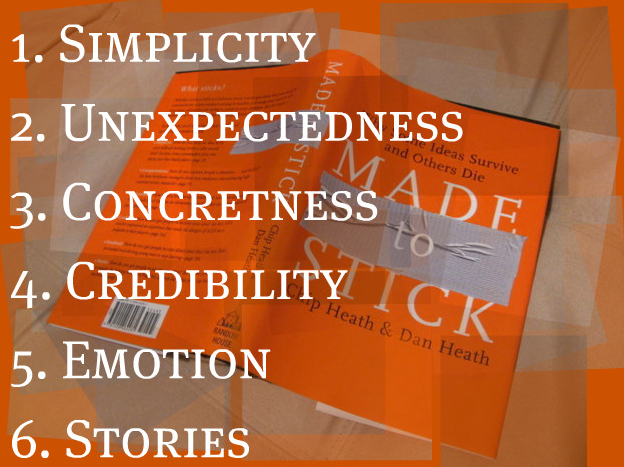
Have you ever walked an audience through your recommendations, only to have them go nowhere? If you’re like most data scientists, chances are that you’ve been in this situation before.
Part of the work of a data scientist is being able to translate your work into actionable recommendations and insights for stakeholders. This means making your ideas memorable, easy to understand and impactful.
In this article, we’ll explore the principles behind the book Made To Stick, and apply it within the context of data science. This book suggests that the best ideas follow six main principles: Simplicity, Unexpectedness, Concreteness, Credibility, Emotions, and Stories (SUCCESs). After reading this article, you’ll be able to integrate these principles into your work and increase the impact of your recommendations and insights.
Simple
Making an idea simple is all about stripping the idea to its core. It’s not about dumbing down, but about creating something elegant. This means that you should avoid overwhelming your audience with ideas, when you try to say 3 things, you don’t say anything at all. Another key component to making ideas simple is to avoid burying the lead. If during your analysis you find that 10% of customers contribute to 80% of revenues, lead with that key insight! You should follow an inverted pyramid approach where the first few minutes convey the most information, and as you get further you can get more nuanced. Analogies and metaphors are also a great way to get your ideas across simply and succinctly. Being able to use schemas that your audience can understand and relate to, will make it a lot more digestible. For example, a one-sentence analogy like Uber for X can capture the core message of what you’re trying to convey.
Unexpected
An unexpected idea is one that violates people’s expectations and takes advantage of surprise. You can do this in several ways, one of which is making people commit to an answer, then falsifying it. For example, asking to guess how much time employees spend doing a task you’re looking to automate before revealing the real answer. Another way to generate interest and leverage the unexpected principle is to use mysteries since they lead to “aha” moments. This might take the form of starting your presentation with a short story, that you don’t resolve until the end.
Concrete
Abstractness is the enemy of understanding for non-experts. It’s your job as the data scientist to make your recommendations and insights more concrete. A key to understanding is using concrete images and explaining ideas in terms of human actions and senses. The natural enemy of concreteness is the curse of knowledge. As data scientists, we need to fight the urge to overwhelm our audiences with unnecessary technical information. For example, reporting on the Root Mean Squared Error of a model, may not be as helpful as breaking up the language into more concrete terms that anyone can understand.
Credible
Adding credibility to your recommendations can take three forms. The first is the most common one when we think of credibility, which is leveraging experts to back up claims or assertions. Another way is using anti-authorities who are real people with powerful stories. For example, if you’re talking about the dangers of smoking, the story of someone who suffers from lung cancer will be a lot more impactful than a sterile statistic. The third ways of adding credibility to your story is by outsourcing the credibility of your point to your audience. This means creating a testable claim that the audience can try out. For example making the claim that customers from region A, take up 80% more customer support time than any other region. In posing this claim, your audience can confirm this claim which can make it easier to lead to your recommendation.
Emotions
Weaving an emotional component to your ideas is all about getting people to care. Humans are naturally wired to feel for humans, not for abstractions. As a result, one individual often trumps a composite statistic. Another component of emotions is tapping into the group identities that your audience conforms to. By keeping those identities in mind, you can tie in the relevant associations and evoke certain schemas that your audience will be most receptive to. For example, if you know one of your audience members is a stickler for numbers and wants to see a detailed breakdown of how you arrived at certain conclusions, then adding an appendix may be helpful.
Stories
Humans have been telling stories for centuries and they have proven to be one of the most effective teaching methods. If you reflect on the books you’ve read in the past 5 years, you’re more likely to remember the interesting stories rather than objective facts. When weaving stories into your recommendations, make sure to build tension and don’t give everything away all at once. Another useful tactic is telling stories which act as springboards to other ideas. Creating open-ended stories that your audience can build on is a great way for them to get a sense of ownership.
Next time you’re tasked with distilling your insights or pitching recommendations, keep in mind these six principles and you’ll be creating simple, unexpected, concrete, credentialed emotional stories in no time!